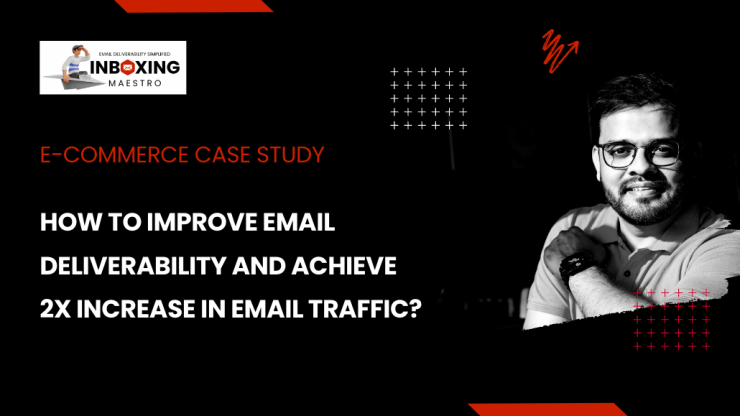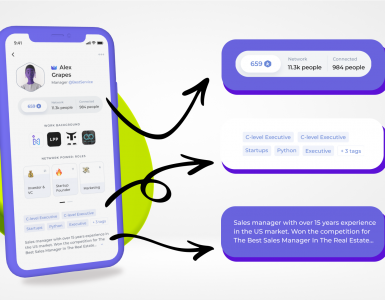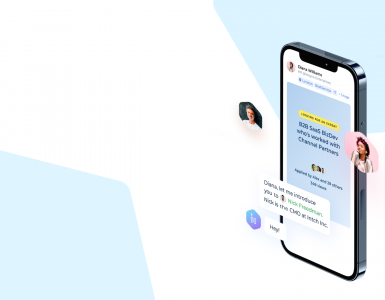Hey! My name is Mohsin Farooqui — Founder & Chief Inboxing Strategist of Inboxing Maestro, where I help permission-focused email senders get to the inbox, and turn emails into a major revenue source, through my 4-phase inboxing growth framework.
Let’s see what the framework is in an example of a case study.
Customer Summary: Online furniture & home decor seller in India that has more than 8 million+ happy customers across 500+ cities.
Problem Statement
The main focus for the client was to acquire more customers and increase customer retention – and for retention, email was their most preferable channel of choice.
But, as their client list was growing, they started facing some serious deliverability & reputation challenges at Gmail for their multiple sending domains because of the following reasons:
- Lack of proper subscriber onboarding & preference capture mechanism – unsecured web forms & single opt in acquisition method
- Going against the best email sending practices: inconsistency with sending frequency, sudden spikes in email volumes, poor planning, and sending heavy image-based emails with blacklisted image hosting domain URLs in content.
- Poor list acquisition & housekeeping practices lead to high bounce rates (~8%) and low engagement (OR: ~4.5% | CTOR: 3%)
- High spam complaints and low engagement because of the high frequency of emails to new subscribers
- Most importantly, they had no visibility in monitoring deliverability & reputation insights.
Below were the snapshots of their reputation health:



Solution: increasing consistency in email delivery and traffic
To fix the problem, the 4-phase inboxing growth framework was used. The phases are: build, Reach, Engage & Impact.

Phase 1: BUILD
During the first phase it’s important to establish a strong foundation for email deliverability for the brand. It all starts with an audit assessment to analyze the data sources, past campaign performance campaign management process, email configuration, authentication, sending distribution, content strategy, and to identify common patterns and behaviors that must be avoided to encounter the deliverability challenges.
After the audit, the work with clients starts and it includes:
- Presentation of the audit results;
- Presentation of the step-by-step plan for fixing the deliverability issues;
- Onboarding of relevant stakeholders from the brand according to the new plan to avoid issues in the future;
- Presentation of a bigger plan and a strategy for further work with email traffic.
After working with the client, the next step was to work on two main areas where the most issues were occurring:
- Sending distribution
- List Validation & housekeeping
As a part of sending distribution strategy, it was important for the brand to keep different messaging streams on different sub-domain/IP pairs instead of mixing the kinds of streams & confusing mailbox providers. Also, the strategy was to migrate the business-sensitive campaigns (that were impacted by the reputation hit) to a sub-domain/IP that has a stable reputation, so that the business won’t get affected much.
At the same time, it was important to work with the client’s product & marketing teams to:
- Set up a real-time list validation API to ensure email addresses got verified at a form level during sign-up, implementing CAPTCHA, and system to trigger a confirmation email for double opt-in before receiving a Welcome email.
- Get their entire list verified using a one-time validation strategy so that they can have a clear understanding of their list health and avoid targeting hidden spam traps or dormant users.
Phase 2: REACH
During the second phase, it was essential to establish a positive healthy reputation with mailbox providers for maximum inbox reach through strategic beginnings by:
- Identifying the recent most engaged audience
- Crafting the best-performing campaign
- Planning out a strategic warmup & ramp up plan to start low & slow
- Setting up a reputation & deliverability monitoring system
With this approach, a 4-week warmup plan ISP-wise (with additional 2 weeks in buffer) was planned in case the process would take longer due to campaign performance and ISP feedback.
Without monitoring, nothing would matter! So, I also helped them set up a deliverability monitoring tool which was equally important in the entire process. With its implementation, the brand was able to monitor deliverability rates across ISPs, spam trap hits (if any), and blocklisting, and also able to perform inbox placement seed tests.
Phase 3: ENGAGE
This phase was focused on working closely with the retention team to identify the right customer segments that can not only drive engagement but also improve traffic and repeat conversions.
The strategy was to make sure the right segments were targeted at the right time with the right content. So, the content was an important lever for this whole process.
Below were the core segments that I have recommended to engage with:
- Core audience: Engaged users who have opened or clicked within the last 90 days (Most recommended for ramp-up phase and active emailing)
- Lesser Engaged: Users who have not engaged in the last 90 (up to 180) days, though they have engaged at least once within the email channel (To be clubbed with active email streams under controlled frequency)
- Unengaged: Users who have not engaged within the last 180-365 days or have never engaged within the email channel, post opt-in (Ask them to unsubscribe or update their preferences or include them in the re-engagement program)
- Dormant: Users who have not at all engaged with any email campaign beyond 365 days, pose a high risk for deliverability. (Move them for sunsetting and try to reach out from a different channel where they are active)
Phase 4: IMPACT
At this stage the focus was to work with the retention team to get most of their triggered use cases automated, so that team can focus more on the strategy to keep the engagement up and reputation intact. Almost 70% of campaigns got automated, like, Abandoned Cart, Welcome Onboarding program, Out of stock, Abandoned browse, and birthday/anniversary program.
Results: calculating increased email deliverability and traffic
After implementing the 4-phase inboxing growth framework, in a span of 2 months, the brand was able to achieve the high reputation and success KPIs:


- Sender reputation moved from LOW to HIGH and deliverability rates from 77% to 94%
- Email traffic got increased from 5k/month to 11k/month
- 114% increase in the open rates (from 4.5% to ~9.5%)
- 2X increase in the click-to-open rates (from 3% to 7%)
- Monthly email volumes increased up to ~1 Mn per month
- 70% of campaigns are automated with business-relevant behavioral use-cases
So, If you have a permission-based opt-in email list, but facing:
- Low open rates for your marketing emails
- Your marketing emails getting delivered in Spam
- Low inbox placement rates across ISPs
- Suffering from poor sender reputation & blacklisting issues
- Looking for expert consulting to genuinely improve your email marketing results
Feel free to message me on Intch and I will be happy to help!







Aren’t email delivery services dead? Ever since Google launched the Promo folders – everything goes there (if not in Spam) and it just seems like a ton of effort for nothing. Nice framework tho!
Hi Adam,
Email can never be dead – in fact, it’s evolving faster and is the core of customer retention, and acts as a primary identifier when it comes to customer 360 view.
Talking about promotion tabs, it’s still inbox and I have seen brands getting higher click engagement when emails landed in the promotions tab it all depends on your relationship level with your subscribers and matching the content relevancy with their expectations to drive higher engagement.
If your subscribers treat your emails as wanted and like to engage, Gmail will see it as a strong positive signal and may land in the primary over a period of time. Alternatively, you can also educate your subscribers to drag and drop emails from promotions to the primary tab.
Just FYI – Google offers tools like annotations, AMP in emails, and BIMI, which will also help you stand out in the inbox.
Thanks for the info – will forward it to the people we hired to set the emailing system for us!
Thanks, Kylie! Glad you like the content. In case of any further questions, feel free to reach out on Intch.
I like the framework, but are there any tips on how to make engaging content in emails? Pictures, videos, headers? Seems like it’s all about the content these days
Hi Ashleeigh,
Making engaging content depends on your understanding of your subscribers/customers. If you are crystal clear on your WHO, their pain points, and what results you are going to bring when they use your products & services, creating the content will become easier.
Leverage the power of segmentation, dynamic content, and personalization to deliver relevance and better customer experience through your emails. You can use pictures, videos, GIFs, etc. in your emails depending on your audience type and understanding of what entices them to engage.
The simple strategy would be to start with your data and create the content basis the cohort and test.
Thanks! Very useful!
Thanks, Kristina! Appreciate the feedback 🙂